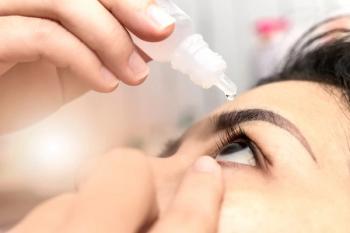
Researchers study bacterial adhesion to silicone hydrogel materials
Preventing bacterial adhesion to novel silicone hydrogel contact lens materials with lactoferrin and lysozyme coatings was the focus of new studies undertaken by researchers.
Orlando, FL-Preventing bacterial adhesion to novel silicone hydrogel (SiH) contact lens materials with lactoferrin and lysozyme coatings was the focus of studies undertaken by researchers in a recent collaboration between the University of Waterloo School of Optometry, Waterloo, Ontario, the Institute for Eye Research, Sydney, Australia, and Alcon Laboratories, Fort Worth, TX.
These researchers also sought to understand how this phenomenon might be altered by coating contact lenses with proteins that are found in tears.
At the annual meeting of the American Academy of Optometry, Lakshman Subbaraman, BSOptom, MSc, PhD, FAAO, presented the findings from studies investigating the effects of lactoferrin and lysozyme as individual coatings on the adhesion of one gram-positive bacteria (Staphylococcus aureus) and two gram-negative isolates (a cytotoxic strain of Pseudomonas aeruginosa and an invasive strain of P. aeruginosa).
The results included some surprising findings and suggested a number of areas for future research, said Dr. Subbaraman of the Centre for Contact Lens Research, University of Waterloo School of Optometry.
"Attachment of bacteria to contact lens materials is one of the first steps in the development of microbial keratitis," he said. "Previous studies have shown deposition of tear film components plays an important role in adhesion of bacteria to conventional and [SiH] contact lenses. However, while studies have investigated the influence of individual tear components on adhesion to conventional hydrogel lenses, similar research has not been conducted with novel [SiH] contact lenses.
"Results from our initial experiments show that uncoated [SiH] lens materials bind more bacteria than an uncoated FDA group IV conventional hydrogel lens materials," he continued. "We also found that the two protein coatings modulate bacterial binding to the [SiH] lens materials. The effect, however, differs by protein and by the bacterial strain."
Study methods
A control set of uncoated lenses was prepared by removing the lenses from their packaging solution, rinsing with phosphate buffer solution (PBS), and incubating the lenses in a bacterial suspension for 24 hours at 37 degrees C with PBS as the medium. To prepare the coated lenses, after the PBS rinse and prior to incubation in the bacterial suspension, lenses were incubated in a lactoferrin or lysozyme solution at 37 degrees C for 24 hours with constant rotation.
The concentration used for the protein solutions was selected so that the final concentration on the lenses would be similar to levels seen ex vivo. For all lenses, counts of both viable and total adhered bacteria were determined.
The results showed lysozyme coating significantly increased adhesion of S. aureus to all four lens materials with no significant differences between the total and viable counts. For the two gram-negative strains, lysozyme had no significant effect on the level of adhesion to any of the lens materials, but again there was no significant difference between viable and total bacterial counts.
"These findings were somewhat surprising as they indicate lysozyme deposited on contact lens materials had no antibacterial effect against any of the strains we tested," Dr. Subbaraman said.
The results with lactoferrin coating and S. aureus incubation followed the same pattern as those observed using lysozyme. However, total counts of both strains of P. aeruginosa were significantly increased on the lactoferrin-coated lenses relative to the uncoated controls, while counts of viable bacteria were significantly decreased.
"These latter findings suggest lactoferrin might be considered as a candidate in the development of antimicrobial contact lens materials," Dr. Subbaraman said.
Newsletter
Want more insights like this? Subscribe to Optometry Times and get clinical pearls and practice tips delivered straight to your inbox.
















































.png)


